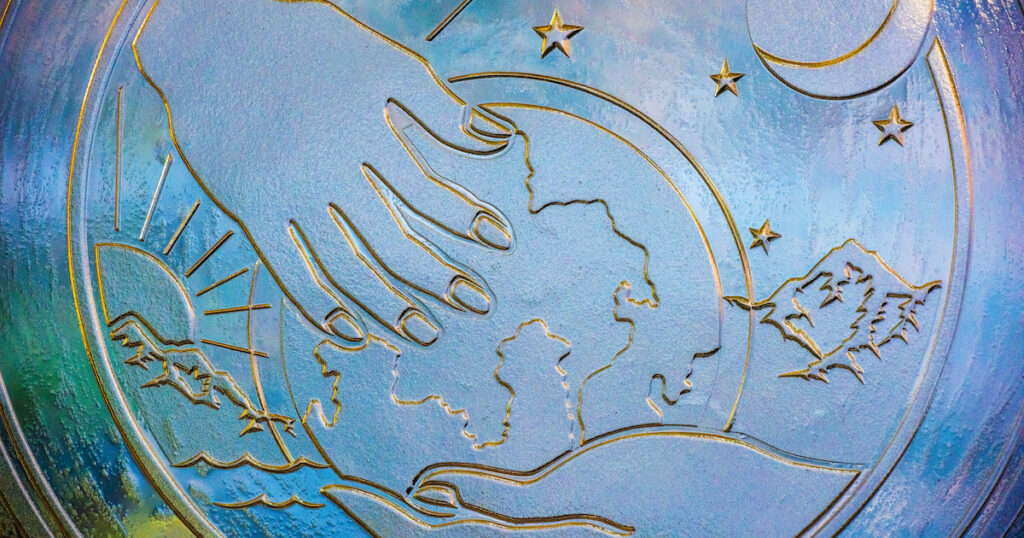Everyone is an artist.
This is a revelation to those who never thought of themselves as artists before. But when Christians understand why human beings create and what the creative process reveals about their Creator and themselves, they will discover that everyone is indeed an artist.
Those who know the source of their creativity — our Creator — find a purpose for their art. This not only makes them better artists, it makes them more effective Christian witnesses.
An effective Christian artist does not merely imitate secular art and “Christianize” it with spiritual themes or verbiage. Since God is Lord of all of life, not just a compartmentalized spiritual part, art is no less Christian if it doesn’t have an explicitly religious theme. Whether a work is about love or conflict or beauty or power or pain, it reflects the world God created and/or the consequences of the fall, and it can direct the viewer/listener/reader to the Creator and Redeemer.
God is the Creator of all things, and He placed in humankind a creative nature.
J.R.R. Tolkien described the gulf between the Creator, who made all things out of nothing, and the “sub-creator,” who works with the primary materials God created to produce secondary creations. What we create is only a shadow of the original creation, but it is nonetheless connected.
Tolkien wrote: “Man, Sub-creator, the refracted light through whom is splintered from a single White to many hues, endlessly combined in living shapes that move from mind to mind.”[1]
When we create, we reveal one part of our nature as God’s creation — even if it is not our intention. The atheist artist still reflects the creative nature instilled in her by the Creator, though she vehemently denies it.
The Christian understands that the purpose of art is to call attention to the Creator and so glorify Him. This happens to some degree with any artist, regardless of faith. But the Christian who is more conscious of this is better equipped to do it well.
Many parts, one body
Within every artist is a unique voice or style, but allowing that voice or style to emerge can be scary because there is no objective measure to determine how well this is done. We naturally settle for imitating others’ art because it feels safer than risking rejection of the art we create in our unique voice.
God arranged the members in the body, each one of them, as he chose. If all were a single member, where would the body be? As it is, there are many parts, yet one body.
1 Cor. 12:18–20
A paradox of our faith is that, in one sense, the more we each become like Christ, the less we are like one another. Sure, believers exhibit the same fruit of the spirit — love, joy, peace, patience, kindness, goodness, faithfulness, gentleness, self-control. But in another sense, we fill unique roles as brothers and sisters in Christ. Each Christian is part of the Body of Christ, “and individually members of it” (1 Cor. 12:27). As members of Christ’s Body, Christian artists also fill unique vocations in His Body.
Do not be conformed to this world, but be transformed by the renewal of your mind, that by testing you may discern what is the will of God, what is good and acceptable and perfect.
Rom. 12:2
The apostles and prophets did not conform to the world and its desires, but fulfilled the individual purposes God gave them in the Spirit’s power. As with the prophets and apostles, every believer fulfills a unique role in the kingdom of God.
The arts offer a window into that concept. Each artist has a unique perspective, and, even as the artist re-combines themes from other artists or builds on a theme from a predecessor, each artist still has a unique capacity to call attention to the Creator and His creation. Finding or developing our authentic voice or style is essential to fulfilling the unique role God has prepared us for. The Christian artist best fulfills her role when she creates what no one else has created — or could create.
And God saw everything that he had made, and behold, it was very good.
Gen. 1:31
Where were you when I laid the foundation of the earth? … when the morning stars sang together and all the sons of God shouted for joy?
Job 38:4, 7
The Lord your God is in your midst, a mighty one who will save; he will rejoice over you with gladness; he will quiet you by his love; he will exult over you with loud singing.
Zeph. 3:17
God takes most delight in the part of creation He made in His own image and restored to that image through the work of Christ: you. You inspire Him to sing with joy!
The joy of creating
An essential element in creation is to pour your emotions into the act of creating. We see this unfiltered joy and excitement in an infant discovering the sound of his own voice or of a toddler reaching up and plunking the piano keys for the first time or a preschooler with a box of crayons and a pad of paper, filling page after page with utter abandon. You also see it in a virtuoso performing a solo at a symphony concert or in the novelist who spills words onto the page.
But somewhere along the way, most of us lose the joy of creating. Someone tells the preschooler not to “waste” paper, and she goes from celebrating her ability to create to thinking her efforts are a “waste.” Or he is told not to bang on the piano keys because it damages the instrument, and the joy of creation becomes the shame of destruction. Or we see someone else who seems much more talented and become embarrassed of our own creations.
And so by young adulthood we lose the joy. Many no longer even recognize themselves as sub-creators. We have even adopted idioms of failure: I can’t carry a tune in a bucket; I couldn’t draw a straight line with a ruler; the only thing I can play is a radio; I don’t have a creative bone in my body.
When you belittle a work of art, you are in effect belittling the artist who created it. When we disparage ourselves, we are disparaging our Creator, albeit unintentionally.
We can rekindle the joy of creation as we remember who we are, created and redeemed expressions of God’s creative nature.
Photograph by LCMS/Erik Lunsford.
[1] J.R.R. Tolkien, “On Fairy Stories,” in The Monsters and the Critics, ed. Christopher Tolkien (London: HarperCollins, 1997), 144.






The article claims, “The Christian artist best fulfills her role when she creates what no one else has created — or could create.”
From the perspective of this reader and sometimes-artist, any ambition to be one-of-a-kind is vain indeed. Is there any way to determine what “no one else has created — or could create”?
These things please God: “Having gifts that differ according to the grace given to us, let us use them.” (Romans 12:6 ESV) “And whatever you do, in word or deed, do everything in the name of the Lord Jesus, giving thanks to God the Father through him.” ( Col. 3:17 ESV)